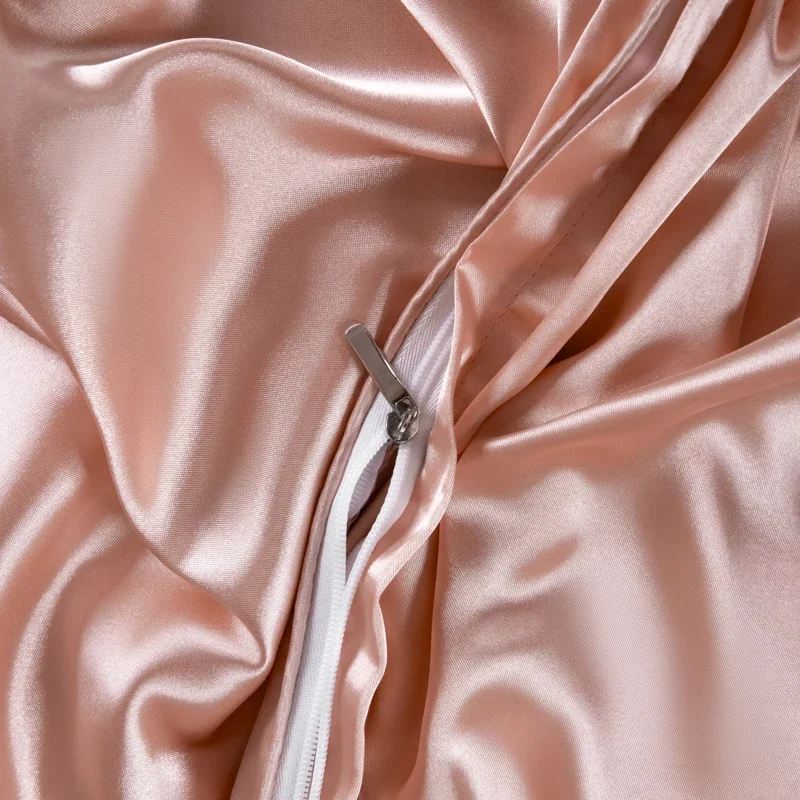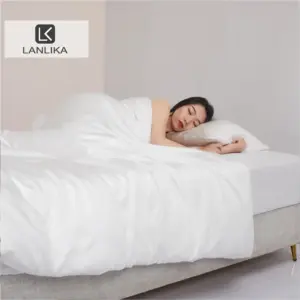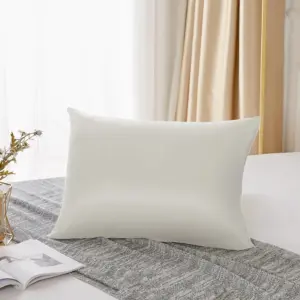Understanding Your Body’s Sleep Temperature Needs
Getting quality sleep isn’t just about a comfortable mattress or a quiet room—temperature plays a crucial role in how well you rest. Your body naturally prefers to sleep in what experts call a “thermal neutral zone,” with the ideal bedroom temperature falling between 60-67°F (15.6-19.4°C). During sleep, your core body temperature naturally drops to about 96-97°F (35.6-36.1°C), which helps trigger and maintain deep sleep.
When your sleep environment is too hot or too cold, your body works overtime to regulate its temperature. This extra effort disrupts your sleep cycles, leading to tossing and turning, frequent waking, and poor overall sleep quality. In fact, studies show that temperature-related sleep disturbances affect nearly 65% of people at some point, making it one of the most common reasons for sleep problems.
Common temperature-related sleep issues include:
– Night sweats that leave bedding damp and uncomfortable
– Overheating that causes restlessness and interrupted sleep
– Cold extremities (especially feet) that prevent falling asleep
– Temperature fluctuations throughout the night
This is where the remarkable properties of silk—especially Mulberry silk—come into play. The natural temperature regulation of silk sheets provides a solution to these common sleep disruptions, helping maintain that perfect sleep temperature throughout the night regardless of the season or your personal tendency to sleep hot or cold.
The Natural Science Behind Silk’s Temperature-Regulating Properties
What makes silk such an exceptional material for regulating body temperature during sleep? The answer lies in its unique molecular structure. Mulberry silk is composed primarily of protein fibroin, arranged in a remarkable structure that gives it properties unlike any other natural fiber.
At the microscopic level, silk fibers contain tiny air pockets within their protein structure. These microscopic spaces create a natural insulating layer while simultaneously allowing for remarkable breathability—a seemingly contradictory combination that explains silk’s temperature-regulating magic.
Key scientific properties of silk that contribute to temperature regulation:
- Protein Structure: The fibroin protein chains in silk form both crystalline (ordered) and amorphous (less ordered) regions, creating a natural temperature-responsive material.
- Moisture Absorption: Silk can absorb up to 30% of its weight in moisture without feeling wet to the touch—dramatically more efficient than most other natural fibers.
- Thermal Conductivity: Silk has moderate thermal conductivity, meaning it neither rapidly pulls heat away from your body nor traps too much warmth against your skin.
- Air Permeability: The natural structure of silk fibers allows for excellent air circulation while maintaining insulation properties.
These properties work together to create what sleep scientists call a “microclimate” between your skin and bedding—a stable temperature zone that helps maintain optimal sleeping conditions. The science of silk’s temperature regulation explains why it has been prized for centuries not just for its luxury feel but for its practical benefits in promoting better sleep.
Unlike synthetic materials that often create either too much heat retention or insufficient insulation, silk’s natural properties adapt to your body’s changing needs throughout the night.
Cooling Properties: How Silk Keeps You Cool During Warm Nights
When the temperature rises, silk bedding proves its value as a natural cooling material. Unlike many synthetic fabrics that trap heat and create a stifling sleep environment, silk naturally dissipates excess warmth through several key mechanisms:
Superior Heat Dissipation: Silk efficiently conducts excess heat away from the body rather than trapping it against your skin.
Active Moisture Management: When you perspire during sleep, silk quickly wicks away moisture from your skin surface, allowing for natural evaporative cooling to take place.
Enhanced Breathability: The natural structure of silk fibers promotes air circulation, preventing the buildup of humid, warm air next to your skin.
Friction Reduction: Silk’s exceptionally smooth surface means less contact friction against your skin, reducing the heat generated by movement during sleep.
Humidity Control: By absorbing excess moisture without feeling damp, silk creates a drier microclimate that naturally feels cooler.
For those who struggle with overheating during sleep, silk bedsheets perform exceptionally well in hot weather. Unlike cotton sheets that can become saturated with moisture and create a clammy feeling, silk maintains its cooling properties throughout the night.
Many customers who explore our cooling silk sheets report that the material provides relief from common warm-weather sleep problems like night sweats and the uncomfortable “stuck” feeling that can occur with less breathable fabrics.
This cooling effect makes silk particularly valuable for:
– Naturally hot sleepers
– Those experiencing hormonal temperature fluctuations
– Summer sleeping comfort
– Homes in warmer climates
Warming Properties: How Silk Provides Insulation During Cold Nights
While silk excels at keeping you cool in warm weather, it’s equally impressive at providing warmth during colder nights. This dual ability is what makes silk truly unique among bedding materials.
The warming properties of silk work through these mechanisms:
Natural Insulation: The protein structure of silk fibers creates tiny air pockets that trap and hold body heat when needed, similar to how down insulation works but in a much thinner, lighter form.
Adaptive Heat Retention: Silk responds to dropping temperatures by retaining more of your natural body heat within its fibers.
Even Heat Distribution: Unlike materials that create cold and hot spots, silk distributes warmth evenly across its surface.
Prevention of Cold Air Penetration: The tight weave of quality silk fabrics blocks cold drafts while still maintaining breathability.
Extremity Warming: Silk is particularly effective at warming cold feet and hands by reflecting body heat back to these naturally cooler body parts.
The thermal properties of silk bedding have made it a favorite in colder climates for centuries, despite its lightweight nature. What’s particularly remarkable is that this insulation happens without the heavy, restrictive feeling of many traditional winter bedding materials.
This creates the perfect balance—warm enough to prevent cold-related sleep disruptions but never so warm that you overheat. For couples who have different temperature preferences, silk provides a middle ground that can satisfy both warmer and cooler sleepers.
Moisture Management: The Key to Silk’s Temperature Regulation
At the heart of silk’s remarkable temperature-regulating abilities is its exceptional moisture management. This property is so important that it deserves special attention, as it’s the key mechanism behind silk’s ability to both warm and cool as needed.
Silk fibers can absorb up to 30% of their weight in moisture without feeling wet to the touch. This is substantially better than cotton (which absorbs about 27% but feels noticeably damp) and dramatically outperforms synthetic materials, which typically absorb less than 5%.
When you sleep, your body naturally releases moisture—sometimes as much as a cup of sweat per night. Silk manages this moisture in a unique way:
- It quickly draws moisture away from your skin surface
- It disperses this moisture across a wider area for faster evaporation
- It retains its insulating properties even when damp
- It dries relatively quickly compared to many other natural fibers
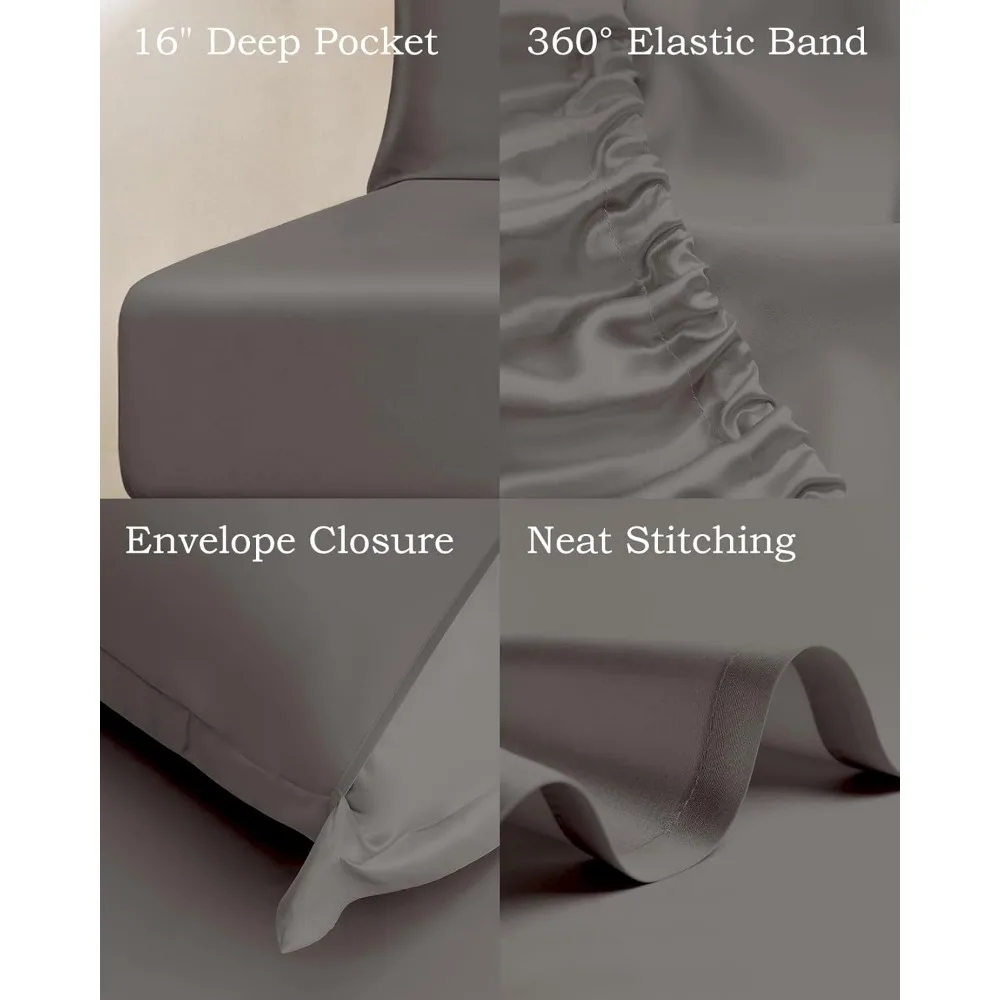
This moisture management does more than just keep you dry—it’s actively involved in temperature control. When you’re too warm, the moisture-wicking accelerates evaporative cooling. When you’re cold, silk’s ability to manage moisture prevents the chilling effect that damp fabrics typically create.
For those who struggle with night sweats, silk’s ability to prevent discomfort through moisture control can be transformative. Rather than waking up to change damp sheets or clothing, silk helps maintain a consistently dry, comfortable sleep environment throughout the night.
Solving Common Sleep Temperature Problems with Silk
Silk bedding doesn’t just offer theoretical benefits—it provides practical solutions to many common sleep temperature issues that disrupt quality rest:
Night Sweats
Night sweats can range from mildly uncomfortable to severely disruptive. Silk manages this problem by quickly absorbing excess moisture without trapping heat. Unlike cotton, which becomes saturated and stays damp against your skin, silk disperses moisture and remains comfortable, allowing you to continue sleeping undisturbed.
Hot Flashes
For those experiencing hormonal changes that trigger sudden temperature increases, silk responds rapidly to these fluctuations. When a hot flash occurs, silk immediately begins wicking away excess heat and moisture, helping to minimize the duration and intensity of the discomfort.
Cold Extremities
Cold feet and hands can prevent you from falling asleep or cause unwanted nighttime wakings. Silk naturally reflects body heat back to these cooler areas while still allowing for proper air circulation, helping maintain an even body temperature.
Partner Temperature Differences
When one person sleeps hot and the other cold, finding suitable bedding can seem impossible. Silk’s adaptable temperature regulation works uniquely for each sleeper, helping to satisfy different comfort needs on the same bed.
Seasonal Adaptability
Instead of switching between summer and winter bedding, premium Mulberry silk sheets provide year-round comfort. They cool during summer nights and insulate during winter, eliminating the need for seasonal bedding changes.
Many customers find that silk’s temperature-regulating properties eliminate the need for additional cooling or heating devices in the bedroom, creating a more natural sleep environment with fewer disruptions.
Beyond Temperature: Additional Sleep Benefits of Silk
While temperature regulation is perhaps silk’s most remarkable feature, this luxury material offers numerous other benefits that enhance sleep quality:
• Hypoallergenic Protection: Silk naturally resists dust mites, mold, and mildew—common allergens that can disrupt sleep. The smooth, tightly-woven fibers create an environment that’s inhospitable to these sleep disruptors.
• Skin-Friendly Surface: The protein structure of silk is similar to human skin, containing amino acids that interact favorably with your complexion. This reduces friction against delicate facial skin, preventing sleep creases and helping maintain skin hydration.
• Hair Protection: The smooth surface of silk reduces friction against hair, preventing the breakage, tangles, and frizz often caused by cotton pillowcases. This means you wake with smoother hair and less bedhead.
• Gentle on Sensitive Skin: For those with skin conditions like eczema or dermatitis, silk’s hypoallergenic features provide a gentle, non-irritating surface that doesn’t exacerbate symptoms.
• Natural Antimicrobial Properties: Silk contains natural substances that resist bacterial growth, creating a cleaner sleep environment without chemical treatments.
• Reduced Static: Unlike synthetic materials that can create uncomfortable static electricity, silk naturally minimizes static buildup, preventing those unpleasant shocks and hair problems.
These additional benefits work together with silk’s temperature regulation to create a comprehensive sleep-enhancing environment. Rather than addressing just one aspect of sleep comfort, silk provides a holistic approach to improving rest quality.
Silk vs. Other Bedding Materials: Temperature Regulation Comparison
To truly understand silk’s exceptional qualities, it’s helpful to compare its temperature-regulating performance with other common bedding materials:

| Material | Cooling Ability | Warming Ability | Moisture Management | Year-Round Suitability |
|---|---|---|---|---|
| Silk | Excellent | Excellent | Superior | Excellent |
| Cotton | Good | Moderate | Poor when damp | Moderate |
| Synthetics | Poor to Moderate | Poor | Very Poor | Poor |
| Linen | Excellent | Poor | Good | Seasonal |
| Wool | Poor | Excellent | Good | Seasonal |
| Bamboo | Very Good | Moderate | Good | Good |
Silk vs. Cotton
While cotton is breathable, it absorbs moisture but then holds it against your skin, creating that unpleasant damp feeling during night sweats. Cotton also lacks silk’s insulating properties, making it less versatile across seasons.
Silk vs. Synthetic Materials
Synthetic fabrics like polyester typically trap heat and block air circulation, leading to overheating. They also have minimal moisture-wicking capabilities, creating a sweaty, uncomfortable sleep environment.
Silk vs. Linen
Linen offers excellent cooling properties but lacks the warming abilities of silk. It’s also prone to wrinkling and can feel rough against sensitive skin, unlike silk’s smooth surface.
Silk vs. Wool
Wool provides superior insulation but can be too warm in moderate temperatures and lacks silk’s cooling abilities. It’s also more likely to cause skin irritation for sensitive individuals.
A comprehensive guide to temperature-regulating sheets shows that while each material has its strengths, silk uniquely excels in both warming and cooling properties, making it the most versatile option for year-round comfort.
Essential Silk Bedding Products for Optimal Temperature Control
To experience the full temperature-regulating benefits of silk, consider how different silk products address specific sleep needs:
Silk Pillowcases
Silk pillowcases are often the entry point into the world of silk bedding, providing temperature regulation for your head and face—areas particularly sensitive to overheating. They prevent the “hot pillow” phenomenon that disrupts sleep and help maintain consistent head temperature throughout the night.
Our silk pillowcases offer these benefits while also providing hair and skin advantages.
Silk Sheets
For full-body temperature regulation, silk sheets are essential. They create a consistent microclimate across your entire sleeping surface, preventing hot spots and cold areas that can cause discomfort and waking.
Key features to look for include:
– 100% Mulberry silk construction
– 19-25 momme weight for optimal balance of durability and breathability
– High-quality charmeuse weave for maximum temperature regulation
Silk Duvets and Comforters
Silk-filled duvets offer exceptional temperature adaptability throughout changing seasons. They provide sufficient warmth for winter use while remaining breathable enough for year-round comfort, eliminating the need to switch between summer and winter bedding.
Silk Sleepwear
Adding silk sleepwear to your sleep routine creates an additional layer of temperature regulation directly against your skin, enhancing the effects of silk bedding and providing temperature benefits even when traveling.
100% Silk Sheets, Green Silk Sheets, King Size Silk Bedding Set, Mulberry Silk Bedding Sets, Queen Size Silk Bedding Set
Price range: $1,246.21 through $1,615.22 Select options This product has multiple variants. The options may be chosen on the product pageBamboo Silk Sheets, Cooling Silk Sheets
Price range: $130.76 through $177.80 Select options This product has multiple variants. The options may be chosen on the product page100% Silk Sheets, King Size Silk Bedding Set, Mulberry Silk Bedding Sets, Queen Size Silk Bedding Set, White Silk Sheets
Price range: $1,000.79 through $1,351.42 Select options This product has multiple variants. The options may be chosen on the product pageKing Size Silk Pillowcases, Mulberry Silk Pillowcases, Queen Size Silk Pillowcases
Price range: $94.96 through $121.56 Select options This product has multiple variants. The options may be chosen on the product pageMulberry Silk Fitted Sheet, Mulberry Silk Sheets
Price range: $486.21 through $944.97 Select options This product has multiple variants. The options may be chosen on the product page100% Silk Sheets, Queen Size Silk Fitted Sheet, Queen Size Silk Pillowcases, Queen Size Silk Sheets
Price range: $259.05 through $284.13 Select options This product has multiple variants. The options may be chosen on the product page
For maximum temperature control, consider a complete silk sleep system that combines these elements. At Sanctuary Soft, we’ve found that customers experience the most significant temperature regulation benefits when using multiple silk products together rather than in isolation.
Quality Factors: What Determines Silk’s Temperature Regulating Effectiveness
Not all silk products offer the same level of temperature regulation. Several key quality factors determine how effectively silk will regulate your sleep temperature:
Momme Weight: This measurement of silk density (similar to thread count) significantly impacts performance. The ideal range for temperature regulation is 19-25 momme:
– 19-21 momme: Lighter, excellent for hot sleepers
– 22-25 momme: Medium weight, best for year-round use
– Above 25 momme: Heavier, superior for colder environmentsSilk Type: Mulberry silk, produced by Bombyx mori silkworms fed exclusively on mulberry leaves, offers superior temperature regulation compared to other varieties like Tussah silk. Its longer, more uniform fibers create a more consistent thermal effect.
Weave Pattern: Charmeuse weave, with its smooth face and textured back, provides optimal air circulation while maintaining the fabric’s insulating properties.
Processing Methods: Silk that undergoes minimal processing and uses fewer chemicals maintains more of its natural temperature-regulating proteins and structures.
Purity: 100% silk products provide better temperature regulation than blends, which often compromise silk’s natural properties with synthetic fibers.
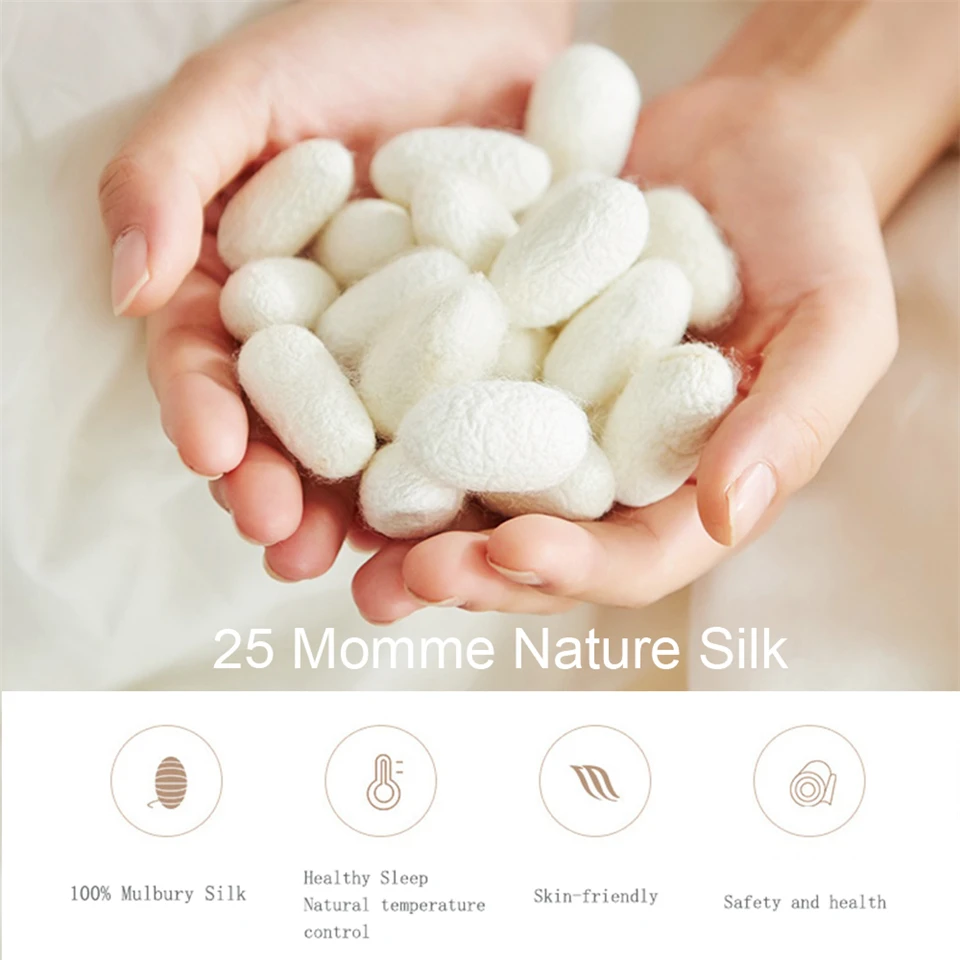
Understanding the importance of momme rating helps you select the right weight for your specific needs. At Sanctuary Soft, we focus on 100% silk sheets within the optimal 19-25 momme range to ensure maximum temperature-regulating performance.
Look for certification and transparency regarding silk quality, as these factors directly impact how well the product will regulate your sleep temperature.
Is Silk Bedding Worth the Investment for Temperature Control?
When considering the higher price point of quality silk bedding, many wonder if the temperature-regulating benefits justify the investment. To make an informed decision, consider these factors:
Longevity and Durability
Quality silk bedding, when properly cared for, can last 10+ years—significantly longer than cotton and synthetic alternatives. This extended lifespan helps offset the initial higher cost.
Sleep Quality Improvements
The temperature regulation provided by silk directly addresses one of the most common causes of poor sleep. Better sleep quality impacts everything from cognitive function to immune health, making it a valuable investment in overall wellbeing.
Reduced Need for Other Solutions
Many customers find that silk bedding reduces or eliminates their need for:
– Electric blankets in winter
– Cooling fans or devices in summer
– Seasonal bedding changes
– Multiple layers of bedding to satisfy different sleeper preferences
Health Benefits Beyond Temperature
The additional hypoallergenic and skin benefits provide value beyond just temperature regulation, addressing multiple sleep disruptions with a single solution.
Our luxury silk bedding sets represent an investment in sleep quality that pays dividends night after night. Rather than purchasing multiple products to address different temperature issues throughout the year, silk provides a single, elegant solution for year-round comfort.
Frequently Asked Questions About Silk and Sleep Temperature
Can silk really keep me both warm and cool?
Yes, silk’s unique molecular structure allows it to adapt to your body’s needs. When you’re warm, it wicks away heat and moisture; when you’re cool, it provides insulation by trapping body heat in its fibers. This dual functionality is what makes silk uniquely effective for temperature regulation.
How does silk compare to high-tech cooling fabrics?
While many synthetic “cooling” fabrics work through one mechanism (usually moisture-wicking), silk provides multiple cooling and warming functions naturally. Unlike synthetics that often lose their effectiveness over time, silk maintains its temperature-regulating properties throughout its lifespan without chemical treatments or special coatings.
Is silk suitable for those with night sweats or hot flashes?
Absolutely. Silk’s exceptional moisture-wicking ability makes it particularly beneficial for those experiencing night sweats. It absorbs moisture quickly while continuing to feel dry against the skin, and its cooling properties help moderate the temperature spikes associated with hot flashes.
What momme count is best for hot sleepers vs. cold sleepers?
Hot sleepers typically benefit from silk in the 19-21 momme range, which provides excellent breathability while still offering silk’s natural benefits. Cold sleepers might prefer 22-25 momme silk, which offers slightly more insulation while maintaining breathability. For those experiencing both temperature extremes, 22 momme provides an excellent middle ground.
How do I maintain silk’s temperature regulating properties over time?
To preserve silk’s temperature-regulating abilities, wash it in cool water with a gentle silk-specific detergent, avoid direct sunlight when drying, and never use bleach or harsh chemicals. These simple care practices will maintain the protein structure that gives silk its remarkable temperature regulation abilities for years to come.

